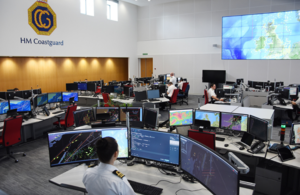HM Coastguard celebrates landmark birthday
UK Government Minister for Scotland Iain Stewart praises work of coastguards in keeping us safe.

!!1
It was on 15 January 1822, that HM Coastguard was formally brought into existence and has been working to keep people safe at the coast and sea ever since.
On Saturday (15 January), coastguards across all four home nations cast throwlines as a symbol of the service’s dedication - past and present.
Throwlines, which form part of the lifesaving kit used by coastguard teams, were cast into the seas around Scotland, England, Wales and Northern Ireland.
UK Government Minister for Scotland Iain Stewart said:
With 87 stations across Scotland, supported by nearly 800 volunteers, HM Coastguard plays a vital role in keeping people safe on our coastlines and at sea.
On behalf of the UK Government and people of Scotland and around the UK, I’d like to pay tribute to the bravery of our coastguards and thank them for the many lives they save. Happy 200th birthday.
Divisional Commander for Scotland, Susan Todd said:
As an emergency service HM Coastguard is always busy and it’s rare that we get the chance to reflect on how far we have come. 200 years of saving lives at sea and at the coast is truly something to be proud of.
The symbolic casting of throwlines across the UK is a reflection of our unwavering commitment to keeping people safe at sea.
Over the past two centuries, HM Coastguard has gone from strength to strength. In 2022, coastguard operations centres will coordinate responses to emergency situations at the coast calling on 310 Coastguard Rescue Teams – made up of 3500 dedicated volunteers – and using 10 search and rescue helicopter bases.
In Scotland there are 113 Coastguard Rescue Teams and 923 Coastguard Rescue Officers.
Last month (December) HM Coastguard began to implement its new updated search and rescue radio network which uses fibre technology. More than £175million has been invested to upgrade the Coastguard’s national radio network across all 165 sites over the next two years. This will improve and future-proof its communication infrastructure and ensure that it remains able to communicate and exchange data quickly and reliably in order to co-ordinate rescues and save lives.
The service continues to adapt to changes – in the last few years providing mutual aid and support during events and incidents to other emergency partners. During the pandemic, coastguards supported the NHS, attended the G7 and COP26 in 2021, and are called in to support during national emergencies including flooding or supplying water to stranded drivers.
The service is currently working hard to reduce its carbon footprint and is aiming to make its UK-wide fleet of vehicles electric wherever possible over the next five years.
Following trials, six electric vehicles have already been purchased, with 19 more currently being procured for use across the UK. Opportunities to electrify the fleet where operationally possible continue to be identified, with the trialling and integrating of electric models as they arrive on the market.